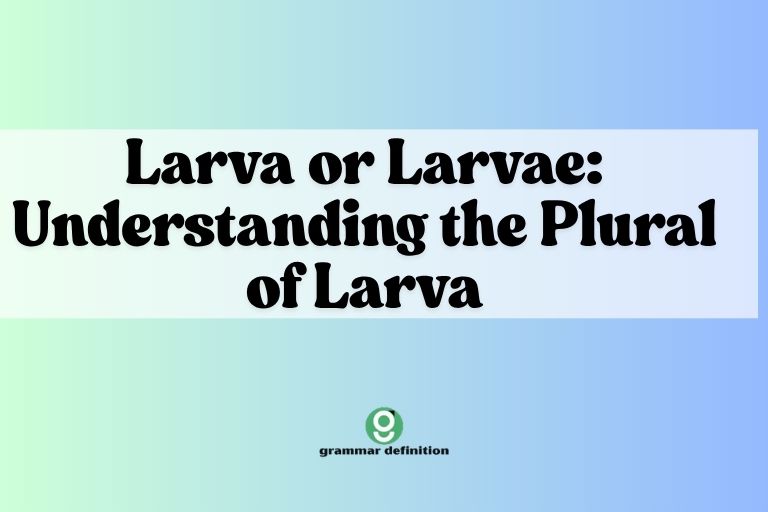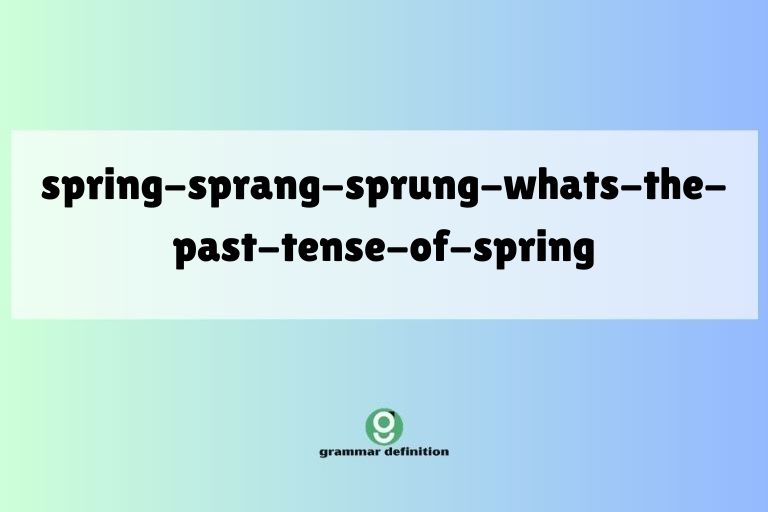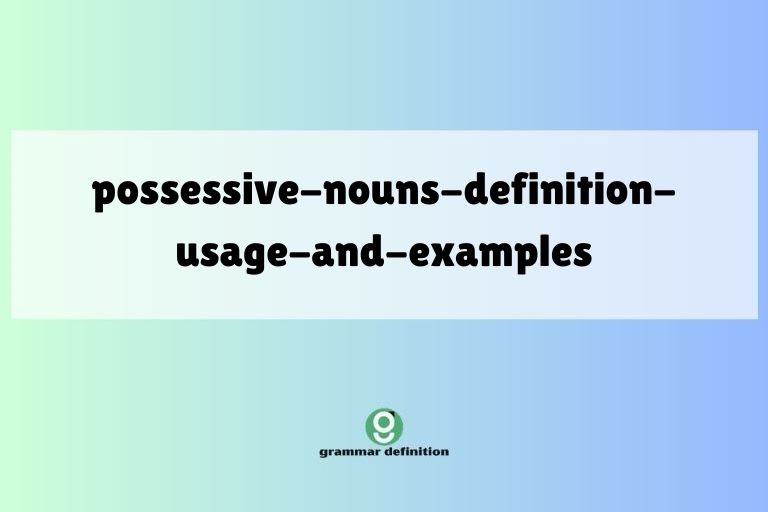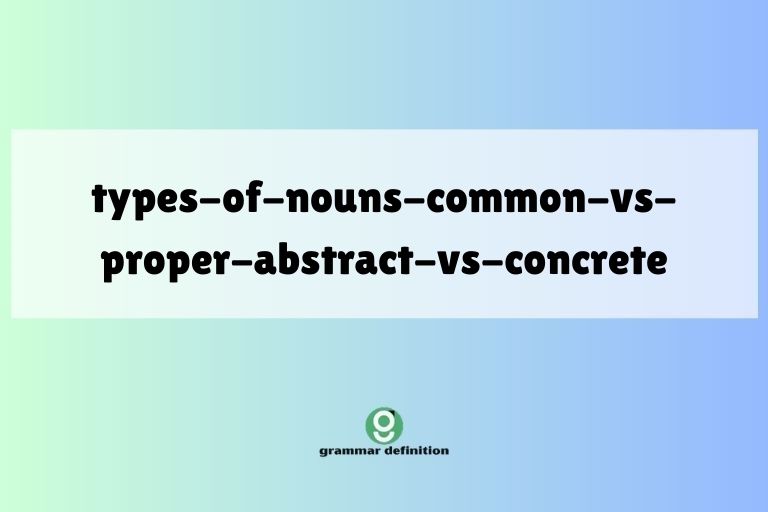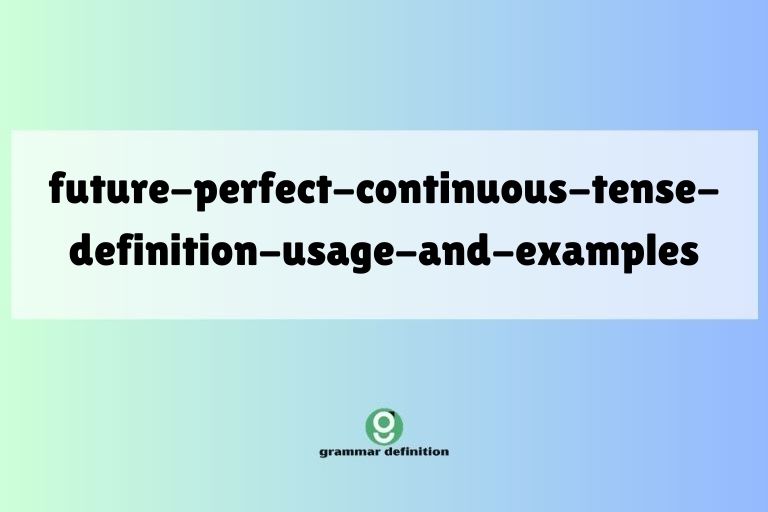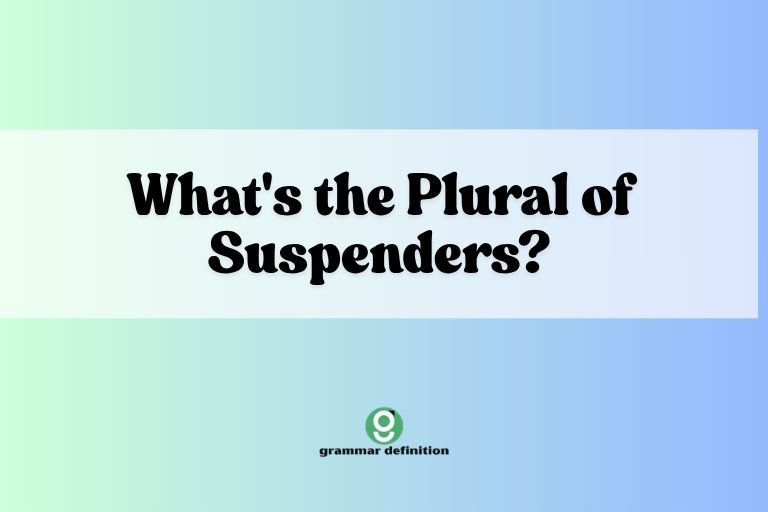Mastering Adverbs: Definition, Types, and Usage
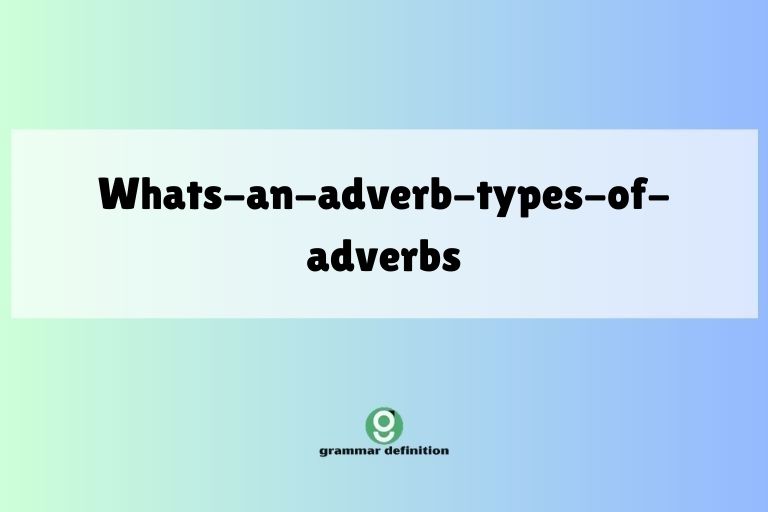
Adverbs are essential components of the English language, enriching sentences by providing additional details about verbs, adjectives, or even other adverbs. Understanding adverbs is crucial for anyone looking to improve their writing and speaking skills.
This comprehensive guide explores the definition of adverbs, their various types, how they function, and common mistakes to avoid. Whether you’re a student, a professional, or simply an English enthusiast, this article will equip you with the knowledge and tools to confidently use adverbs in your communication.
This article will help you identify adverbs, understand their different categories, and use them correctly in sentences. By mastering adverbs, you can add depth, precision, and nuance to your language, making your communication more effective and engaging.
We’ll cover everything from basic definitions to advanced usage, ensuring that you have a solid understanding of this important part of English grammar.
Table of Contents
- What is an Adverb?
- Structural Breakdown of Adverbs
- Types of Adverbs
- Examples of Adverbs
- Usage Rules for Adverbs
- Common Mistakes with Adverbs
- Practice Exercises
- Advanced Topics in Adverb Usage
- Frequently Asked Questions
- Conclusion
What is an Adverb?
An adverb is a word that modifies a verb, an adjective, another adverb, or even a whole sentence. Adverbs provide information about how, when, where, to what extent, or under what conditions something happens. They add detail and precision to our language, allowing us to express ourselves more clearly and effectively. Understanding the function of adverbs is crucial for mastering English grammar and improving your writing and speaking skills.
Unlike adjectives, which modify nouns, adverbs modify verbs, adjectives, or other adverbs. The primary role of an adverb is to provide additional information about the action, quality, or manner described in the sentence.
For example, in the sentence “She sings beautifully,” the adverb “beautifully” modifies the verb “sings,” telling us how she sings. Adverbs are also versatile and can be placed in various positions within a sentence, depending on the desired emphasis and style.
Consider these examples to illustrate the different functions of adverbs:
- Modifying a verb: He ran quickly. (Quickly describes how he ran.)
- Modifying an adjective: It was an extremely hot day. (Extremely describes how hot the day was.)
- Modifying another adverb: She spoke very softly. (Very describes how softly she spoke.)
- Modifying a whole sentence: Fortunately, the rain stopped. (Fortunately modifies the entire sentence.)
Structural Breakdown of Adverbs
Adverbs can be formed in various ways, but the most common method is by adding the suffix “-ly” to an adjective. However, not all words ending in “-ly” are adverbs (e.g., “friendly” is an adjective).
It’s important to understand the function of the word in the sentence to determine whether it’s an adverb. Furthermore, some adverbs have irregular forms and do not follow the standard “-ly” rule.
Other adverbs are single words (e.g., “now,” “here,” “very”) or phrases.
Here’s a breakdown of how adverbs are typically structured:
- Adjective + -ly: Quick (adjective) becomes quickly (adverb). Happy (adjective) becomes happily (adverb).
- Irregular adverbs: These adverbs do not follow the standard “-ly” rule. Examples include well (adverb form of good), fast, hard, and straight.
- Single-word adverbs: These adverbs are not derived from adjectives. Examples include now, then, here, there, very, quite, and too.
- Adverb phrases: These consist of two or more words that function as an adverb. Examples include in fact, at last, on time, and in detail.
Understanding how adverbs are formed can help you identify them more easily in sentences and use them correctly in your own writing. Pay attention to the context in which the word is used to determine its function and ensure that it is modifying the appropriate element in the sentence.
Recognizing the different forms and structures of adverbs will enhance your understanding of English grammar and improve your overall communication skills.
Types of Adverbs
Adverbs can be categorized based on the type of information they provide. Understanding these categories can help you use adverbs more effectively and precisely.
The main types of adverbs include adverbs of manner, time, place, frequency, degree, purpose, conjunctive adverbs, interrogative adverbs, and relative adverbs. Each type serves a specific function in modifying verbs, adjectives, or other adverbs, adding nuance and detail to sentences.
Adverbs of Manner
Adverbs of manner describe how an action is performed. They answer the question “How?” and often end in “-ly.” These adverbs provide details about the way in which something is done, adding vividness and clarity to descriptions. They are essential for conveying the specific manner in which an action unfolds, enriching the reader’s understanding of the event.
Examples of adverbs of manner include quickly, slowly, carefully, loudly, softly, happily, sadly, angrily, easily, and well. These adverbs modify verbs to describe the manner in which the action is carried out, providing greater detail and precision. For instance, instead of saying “He spoke,” you could say “He spoke softly” to convey the manner in which he spoke.
Adverbs of Time
Adverbs of time indicate when an action takes place. They answer the question “When?” and can refer to specific times, durations, or frequencies. These adverbs are crucial for establishing the temporal context of events, helping readers understand when actions occurred or will occur. They provide a sense of timing and sequence, making narratives more coherent and understandable.
Examples of adverbs of time include now, then, yesterday, today, tomorrow, soon, later, already, yet, and still. These adverbs modify verbs to specify the timing of the action, providing clarity and precision. For example, instead of saying “I will go,” you could say “I will go tomorrow” to indicate the specific time of the action.
Adverbs of Place
Adverbs of place specify where an action occurs. They answer the question “Where?” and can refer to specific locations or general directions. These adverbs are essential for establishing the spatial context of events, helping readers visualize the scene and understand where actions are taking place. They provide a sense of location and direction, making narratives more immersive and engaging.
Examples of adverbs of place include here, there, everywhere, nowhere, inside, outside, above, below, nearby, and away. These adverbs modify verbs to specify the location of the action, providing clarity and precision. For example, instead of saying “She is,” you could say “She is here” to indicate the specific location.
Adverbs of Frequency
Adverbs of frequency indicate how often an action occurs. They answer the question “How often?” and can range from definite frequencies (e.g., daily) to indefinite frequencies (e.g., often). These adverbs are essential for conveying the regularity or repetition of actions, helping readers understand how frequently events occur. They provide a sense of rhythm and pattern, making descriptions more informative and engaging.
Examples of adverbs of frequency include always, usually, often, sometimes, rarely, never, daily, weekly, monthly, and yearly. These adverbs modify verbs to specify the frequency of the action, providing clarity and precision. For example, instead of saying “I go,” you could say “I often go” to indicate how frequently you go.
Adverbs of Degree
Adverbs of degree indicate the intensity or extent of an action or quality. They answer the question “To what extent?” and can modify verbs, adjectives, or other adverbs. These adverbs are essential for conveying the strength or intensity of actions and qualities, helping readers understand the degree to which something is present. They provide a sense of scale and proportion, making descriptions more nuanced and informative.
Examples of adverbs of degree include very, extremely, quite, rather, too, enough, almost, hardly, slightly, and completely. These adverbs modify verbs, adjectives, or other adverbs to specify the degree or intensity, providing clarity and precision. For example, instead of saying “It is hot,” you could say “It is very hot” to indicate the degree of heat.
Adverbs of Purpose
Adverbs of purpose explain the reason or intention behind an action. These adverbs often appear in phrases like “in order to” or “so that.” They answer the question “Why?” and provide insight into the motivation behind actions. These adverbs are essential for conveying the purpose or goal of actions, helping readers understand the reasoning behind events. They provide a sense of direction and intention, making narratives more meaningful and coherent.
Examples of adverbs of purpose include phrases like in order to, so that, to (when used to express purpose), and for the purpose of. These adverbs modify verbs to specify the purpose or intention of the action, providing clarity and precision. For example, “He studied hard in order to pass the exam.”
Conjunctive Adverbs
Conjunctive adverbs connect two independent clauses, showing the relationship between them. They act as both adverbs and conjunctions, providing a smooth transition between ideas. These adverbs are essential for creating coherent and logical connections between sentences, helping readers understand the relationships between different parts of the text. They provide a sense of flow and continuity, making writing more persuasive and engaging.
Examples of conjunctive adverbs include however, therefore, moreover, furthermore, consequently, nevertheless, otherwise, indeed, then, and finally. These adverbs connect independent clauses, showing relationships such as contrast, cause and effect, addition, and sequence. For example, “The weather was bad; however, we still went for a walk.”
Interrogative Adverbs
Interrogative adverbs are used to ask questions. They introduce questions about time, place, manner, or reason. These adverbs are essential for gathering information and initiating inquiries, helping to elicit specific details about events and situations. They provide a means of seeking clarification and understanding, making communication more interactive and informative.
Examples of interrogative adverbs include how, when, where, and why. These adverbs begin questions, seeking information about manner, time, place, and reason. For example, “Where did you go?”
Relative Adverbs
Relative adverbs introduce relative clauses, which provide additional information about a noun. They relate the clause to the noun it modifies. These adverbs are essential for adding detail and context to sentences, helping readers understand the relationships between different elements. They provide a means of expanding on ideas and providing further information, making writing more informative and engaging.
Examples of relative adverbs include when, where, and why. These adverbs introduce relative clauses, providing additional information about a noun. For example, “This is the place where I met her.”
Examples of Adverbs
To further illustrate the different types of adverbs, consider the following examples:
Adverbs of Manner Examples
The following table provides 30 examples of adverbs of manner, showing how they modify verbs to describe the manner in which an action is performed. These examples demonstrate the variety and versatility of adverbs of manner in adding detail and precision to sentences.
| Sentence | Adverb of Manner |
|---|---|
| She sings beautifully. | beautifully |
| He ran quickly. | quickly |
| The child ate greedily. | greedily |
| The soldiers fought bravely. | bravely |
| The cat moved silently. | silently |
| He spoke softly. | softly |
| She danced gracefully. | gracefully |
| The rain fell heavily. | heavily |
| He worked hard. | hard |
| She smiled sweetly. | sweetly |
| The baby slept soundly. | soundly |
| He drove carefully. | carefully |
| She painted skillfully. | skillfully |
| The dog barked loudly. | loudly |
| He answered honestly. | honestly |
| She played the piano well. | well |
| The student studied diligently. | diligently |
| He explained the problem clearly. | clearly |
| She reacted angrily. | angrily |
| The team played badly. | badly |
| He accepted the award gratefully. | gratefully |
| She completed the task efficiently. | efficiently |
| The artist painted passionately. | passionately |
| He spoke calmly. | calmly |
| She listened attentively. | attentively |
| He ate his dinner slowly. | slowly |
| She treated him kindly. | kindly |
| The machine operated smoothly. | smoothly |
| He approached the situation cautiously. | cautiously |
| She solved the puzzle easily. | easily |
Adverbs of Time Examples
The following table provides 30 examples of adverbs of time, showing how they modify verbs to indicate when an action takes place. These examples demonstrate the variety and versatility of adverbs of time in establishing the temporal context of events.
| Sentence | Adverb of Time |
|---|---|
| I will go tomorrow. | tomorrow |
| He arrived yesterday. | yesterday |
| She is leaving soon. | soon |
| We will meet later. | later |
| I have already finished. | already |
| He is still working. | still |
| She will call today. | today |
| They arrived early. | early |
| He came late. | late |
| I will see you now. | now |
| He lived there then. | then |
| She has not arrived yet. | yet |
| We go to the park daily. | daily |
| He visits his mother weekly. | weekly |
| She gets paid monthly. | monthly |
| They celebrate annually. | annually |
| He always arrives on time. | always |
| She never forgets her keys. | never |
| I sometimes eat pizza. | sometimes |
| He often goes to the gym. | often |
| She rarely watches TV. | rarely |
| The train arrived promptly. | promptly |
| He finished the project recently. | recently |
| She will start immediately. | immediately |
| They will visit eventually. | eventually |
| He completed the task finally. | finally |
| She plans to travel soon. | soon |
| The meeting will start shortly. | shortly |
| He checked his email frequently. | frequently |
| She studies regularly. | regularly |
Adverbs of Place Examples
The following table provides 30 examples of adverbs of place, showing how they modify verbs to specify where an action occurs. These examples demonstrate the variety and versatility of adverbs of place in establishing the spatial context of events.
| Sentence | Adverb of Place |
|---|---|
| He is here. | here |
| She is there. | there |
| They went everywhere. | everywhere |
| He found it nowhere. | nowhere |
| She is waiting inside. | inside |
| He is playing outside. | outside |
| The bird flew above. | above |
| The treasure is below. | below |
| The store is nearby. | nearby |
| He went away. | away |
| She lives abroad. | abroad |
| He looked around. | around |
| The cat jumped down. | down |
| She walked forward. | forward |
| He moved backward. | backward |
| The children played upstairs. | upstairs |
| The office is downstairs. | downstairs |
| He is standing underneath. | underneath |
| She placed it on top. | on top |
| He is sitting beside. | beside |
| The car is parked outside. | outside |
| She ran through the forest. | through |
| He is swimming across the river. | across |
| She is walking along the beach. | along |
| He is hiding behind the tree. | behind |
| She is looking over the hill. | over |
| He is going toward the city. | toward |
| She is coming from school. | from |
| He is traveling overseas. | overseas |
| She is staying in town. | in town |
Usage Rules for Adverbs
Adverbs should be placed as close as possible to the words they modify to avoid ambiguity. However, the placement can vary depending on the type of adverb and the desired emphasis.
Understanding these rules will help you use adverbs effectively and avoid common errors. The correct placement ensures that the meaning of the sentence is clear and that the adverb modifies the intended word or phrase.
Here are some general guidelines for adverb placement:
- Adverbs of manner: Usually placed after the verb or after the object if there is one. Example: “She sang beautifully.” or “He ate the cake quickly.”
- Adverbs of time and place: Can be placed at the beginning or end of the sentence, depending on the emphasis. Example: “Yesterday, I went to the store.” or “I went to the store yesterday.”
- Adverbs of frequency: Usually placed before the main verb but after the auxiliary verb (if there is one). Example: “I always drink coffee in the morning.” or “He has often visited Paris.”
- Adverbs of degree: Usually placed before the adjective or adverb they modify. Example: “It was an extremely hot day.” or “She spoke very softly.”
It’s important to note that there are exceptions to these rules, and the best placement often depends on the specific context and the desired effect. Experiment with different placements to see how they affect the meaning and flow of your sentences.
Also, be aware of split infinitives, where an adverb is placed between “to” and the verb (e.g., “to boldly go”). While this is sometimes acceptable in modern English, it is often considered poor style.
Common Mistakes with Adverbs
One common mistake is using adjectives instead of adverbs, especially when modifying verbs. For example, saying “He ran quick” instead of “He ran quickly.” Another mistake is misplacing adverbs, which can change the meaning of the sentence.
For instance, “He only ate the apple” means something different than “Only he ate the apple.” Avoiding these common errors will improve the clarity and accuracy of your writing.
Here are some examples of common mistakes and their corrections:
| Incorrect | Correct | Explanation |
|---|---|---|
| He ran quick. | He ran quickly. | “Quick” is an adjective; “quickly” is the adverb. |
| She sings good. | She sings well. | “Good” is an adjective; “well” is the adverb. |
| He only ate the apple. | Only he ate the apple. | Misplaced adverb changes the meaning. |
| I am very interesting in the topic. | I am very interested in the topic. | Confusing adjectives and adverbs. |
| The dog barked loud. | The dog barked loudly. | “Loud” is an adjective; “loudly” is the adverb. |
| He drove careless. | He drove carelessly. | “Careless” is an adjective; “carelessly” is the adverb. |
By being aware of these common mistakes and practicing the correct usage, you can improve your grammar and communicate more effectively.
Practice Exercises
Test your understanding of adverbs with these practice exercises. Identify the adverbs in each sentence and determine their type (manner, time, place, frequency, degree, purpose, conjunctive, interrogative, or relative).
These exercises will help you solidify your knowledge and improve your ability to identify and use adverbs correctly.
Exercise 1: Identify the Adverb and its Type
| Sentence | Adverb | Type |
|---|---|---|
| She sings beautifully. | beautifully | Manner |
| I will go tomorrow. | tomorrow | Time |
| He is here. | here | Place |
| I always drink coffee. | always | Frequency |
| It is very hot. | very | Degree |
| He studied hard in order to pass the exam. | in order to | Purpose |
| The weather was bad; however, we still went for a walk. | however | Conjunctive |
| Where did you go? | Where | Interrogative |
| This is the place where I met her. | where | Relative |
| He ran quickly. | quickly | Manner |
Exercise 2: Fill in the Blank with an Appropriate Adverb
| Sentence | Answer |
|---|---|
| She sings ________. | beautifully |
| I will go ________. | tomorrow |
| He is ________. | here |
| I ________ drink coffee. | always |
| It is ________ hot. | very |
| He studied hard ________ to pass the exam. | in order |
| The weather was bad; ________, we still went for a walk. | however |
| ________ did you go? | Where |
| This is the place ________ I met her. | where |
| He ran ________. | quickly |
Exercise 3: Correct the Incorrect Sentences
| Incorrect Sentence | Correct Sentence |
|---|---|
| He ran quick. | He ran quickly. |
| She sings good. | She sings well. |
| He only ate the apple. | Only he ate the apple. |
| I am very interesting in the topic. | I am very interested in the topic. |
| The dog barked loud. | The dog barked loudly. |
| She finished the race easy. | She finished the race easily. |
| He arrived late for the meeting always. | He always arrived late for the meeting. |
| They visit their grandparents seldom. | They seldom visit their grandparents. |
| The child behaved bad at the party. | The child behaved badly at the party. |
| She spoke soft so no one could hear her. | She spoke softly so no one could hear her. |
Advanced Topics in Adverb Usage
For advanced learners, exploring the nuances of adverb placement and the subtle differences between adverbs with similar meanings can further refine your understanding. Additionally, understanding the use of adverbs in formal versus informal writing can help you adapt your style to different contexts.
Advanced topics also include the use of adverbs to modify entire clauses or sentences, adding a layer of complexity and sophistication to your writing.
Here are some advanced considerations:
- Subtle differences in meaning: Understanding the subtle differences between adverbs with similar meanings (e.g., “considerably” vs. “significantly”) can help you choose the most appropriate word for your intended meaning.
- Formal vs. informal usage: Some adverbs are more common in formal writing, while others are more appropriate for informal contexts. Being aware of these distinctions can help you tailor your writing to your audience.
- Adverbs modifying clauses or sentences: Adverbs like “fortunately,” “unfortunately,” and “obviously” can modify entire clauses or sentences, expressing the speaker’s attitude or opinion.
- Emphasis through adverb placement: Changing the position of an adverb in a sentence can alter the emphasis and focus. Experimenting with different placements can help you achieve the desired effect.
Frequently Asked Questions
Here are some frequently asked questions about adverbs:
- What is the difference between an adjective and an adverb?
An adjective modifies a noun, while an adverb modifies a verb, adjective, or another adverb. Adjectives describe the qualities or characteristics of nouns, while adverbs provide additional information about actions, qualities, or manners. For example, “a beautiful flower” (adjective) versus “she sings beautifully” (adverb).
- How do I identify an adverb in a sentence?
Look for words that describe how, when, where, to what extent, or under what conditions something happens. Many adverbs end in “-ly,” but not all words ending in “-ly” are adverbs. Consider the function of the word in the sentence to determine if it’s an adverb. If it’s modifying a verb, adjective, or another adverb, it’s likely an adverb.
- Can an adverb modify a noun?
No, adverbs typically do not modify nouns. Adjectives are used to modify nouns. Adverbs modify verbs, adjectives, other adverbs, or entire sentences, providing additional information about actions, qualities, or manners.
- What is a conjunctive adverb?
A conjunctive adverb connects two independent clauses, showing the relationship between them. It acts as both
an adverb and a conjunction, providing a smooth transition between ideas. Examples include “however,” “therefore,” and “moreover.”
- Are there adverbs that don’t end in “-ly”?
Yes, many adverbs do not end in “-ly.” Examples include “now,” “then,” “here,” “there,” “very,” “quite,” “too,” “fast,” “hard,” and “well.” It’s important to consider the function of the word in the sentence to determine if it’s an adverb, regardless of its ending.
Conclusion
Adverbs are essential for adding detail, precision, and nuance to your writing and speaking. By understanding the different types of adverbs, their functions, and the rules for their usage, you can significantly improve your communication skills.
Whether you’re describing how an action is performed, specifying when or where it occurs, or indicating the degree or frequency, adverbs provide the necessary information to make your language more effective and engaging. Mastering adverbs is a key step in becoming a proficient and confident communicator.
Continue to practice identifying and using adverbs in your daily writing and speaking. Pay attention to how adverbs are used in the texts you read and the conversations you have.
By actively engaging with adverbs and incorporating them into your language, you can enhance your ability to express yourself clearly, accurately, and persuasively. Remember, the more you practice, the more natural and intuitive your use of adverbs will become.

